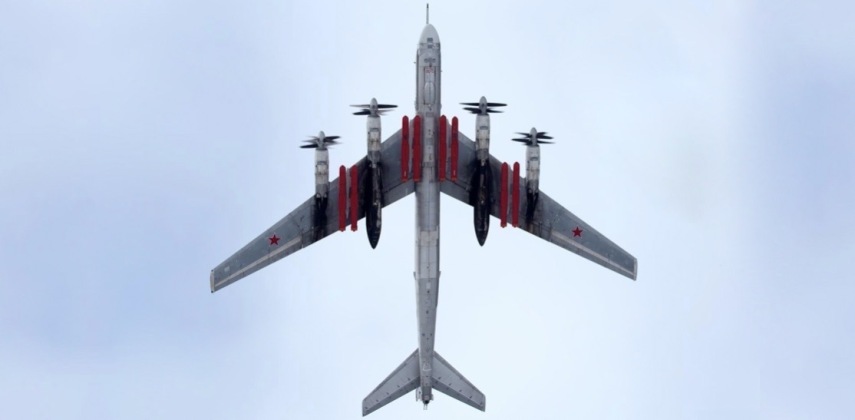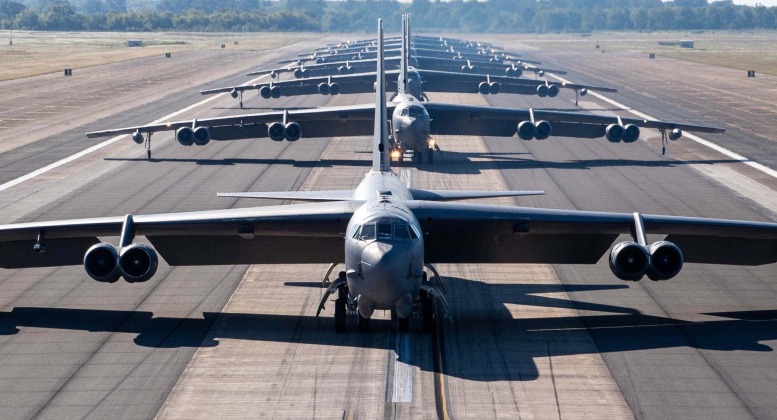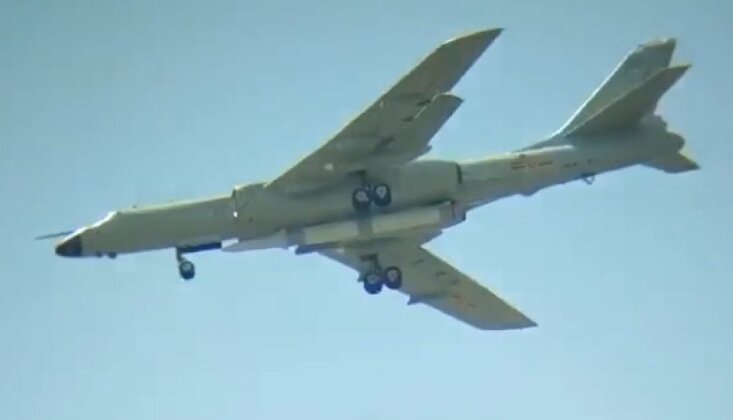News
World’s Top Five Most Dangerous Bombers: From Stealthy B-2s to Ballistic Missile Carrying H-6Ns

Bombers have since the 20th century represented the largest, longest ranged and most heavily armed combat aircraft in the world, with their sizes and endurances having grown considerably during the Second World War when the American B-29 set a new standard, and further still in the first two decades of the Cold War. Today the traditional role of bombers has receded considerably, with the large majority of air forces relying on either multirole fighters or advanced strike fighters for short and medium ranged air to ground missions. This and advances in air defence technologies, which have made flying over targets to drop gravity bombs on them a largely obsolete concept for high value aircraft in most situations, has meant that bombers today serve primarily as missile carriers capable of integrating larger sensor suites, flying much further and deploying significantly more firepower than fighters sized aircraft can.
Aside from North Korea’s fleet of ageing Il-28 jets, which straddle the divide between bombers and strike fighters, only the United States, Russia and China currently operate bombers, with the classes in service all differing from one another very significantly. All three are developing next generation bombers expected to enter service in the late 2020s or early 2030s under the respective B-21, PAK DA and H-20 programs, with all three expected to strongly emphasise stealth and have intercontinental ranges. While the capabilities of these new bombers remains uncertain, evaluating the overall capabilities of bombers already in service allows them to be ranked on performance below:
Tu-160M: Russia
The Russian Air Force’s most capable bomber class, the Tu-160 was designed to revolutionise the Soviet Air Force’s intercontinental range nuclear delivery capabilities, with over 100 having been planned for entry into service by around the year 2000, before the USSR’s disintegration ended the program leaving Russia with a fleet of just 17 aircraft. The bombers have nevertheless been extensively modernised, with a resumption of production announced in 2015 facilitating new deliveries to the Russian Air Force from December 2023. The bomber boasts an unrivalled speed exceeding Mach 2, and has an engagement range estimated at close to 5000km using radar evading Kh-101/102 cruise missiles which have been combat tested extensively in Syria and Ukraine.
New variants, designated Tu-160M, boast stealth coatings, more powerful engines, a much extended range and new avionics and communications as well as new defensive systems. Even for Soviet-built variants the KN-321 turbofan engines represented the most powerful powerplants ever used on an operational military aircraft and were key to facilitating the bomber’s excellent flight performance. The Tu-160M is prized for its pairing of a high speed and endurance with a very high and long ranged weapons payload, which is set to be supplemented by hypersonic missiles currently under development. The Tu-160 fleet has been used to compensate for Russia’s lack of a modern blue water surface navy, and made visits to airfields in strategically critical locations, most notably Venezuela in late 2018, as a show of force and symbol of the Russian military’s nuclear power.

B-2: United States
The latest clean sheet bomber airframe design to enter service anywhere in the world, the B-2 joined the U.S. Air Force in 1997 ten years after the Tu-160 became operational, and made use of a revolutionary flying wing stealth design which made it among the most survivable combat jets in the world. Deigned to be able to deliver strategic nuclear strikes against the Soviet Union and its Warsaw Pact allies, the bomber would see combat over Yugoslavia and Libya and in the former was responsible for a precision strike on the Chinese embassy in Belgrade as part of a CIA operation. The aircraft’s range, firepower, and stealth capabilities remain highly formidable, although its survivability in the 2020s remains questionable due to advances in radar technologies and electronic warfare countermeasures in the 40 years since the aircraft was designed.
The B-2 suffers from a number of significant weaknesses, most notably its extreme maintenance requirements and operational costs which mean it spends considerably more time on the ground for each hour in the air than any other combat aircraft – moreso if logistics are strained by wartime conditions. Extreme operational costs made the aircraft entirely unaffordable in meaningful numbers, and as a result only 20 serial production aircraft were built out of a planned 120. The aircraft also suffers from a lack of standoff weapons, other than the recently integrated relatively short ranged JASSM missile designed primarily for much smaller fighter sized aircraft. Integration of these was seen as a response to the declining viability of the bomber’s 1980s stealth technologies for deep penetration flights. The B-2’s stealth capabilities long made it only one viable for dropping gravity bombs against moderately well defended airspace, such as delivering GBU-57 penetrative rounds against Iranian nuclear facilities or North Korean missile bases. Advances in potential adversaries’ sensors, however, means such missions are unlikely to be considered today unless significant air defence suppression efforts are first undertaken.

Tu-95MS: Russia
The Tu-95 first flew during the Korean War when the Soviet Union was still led by Joseph Stalin, and for most of the Cold War represented the country’s only class of intercontinental range bomber with over 500 airframes built. The Tu-95s in service today are nevertheless among the newer bombers in the world, having been produced from the late 1980s and until 1993 combining the benefits of the reliable low maintenance airframe design with significant technological advances. The bombers have since been modernised to the Tu-95MS standard, which includes integration of new engines, use of fundamentally new cockpit avionics and compatibility with Kh-101/102 cruise missiles as its primary armament. The new larger missiles cannot be housed in the aircraft’s KMU-6-5 rotary launcher, and are carried externally with up to eight being deployed by each bomber. The bomber’s long ranges despite its relatively small size, and the capabilities of its very long ranged and precise radar evading missiles, makes it a highly potent and cost effective asset which can be maintained at much higher availability rates than the Tu-160.

B-52H: United States
The oldest bomber airframes in service anywhere in the world, the B-52H aircraft built in the 1950s continue to form the backbone of the American bomber fleet with new airframes being brought out of storage to expand numbers. The aircraft’s simplicity and ease of maintenance have led to it being favoured over the B-2 and troubled B-1B, as well as already retired newer designs such as the B-58. The B-52 is set to remain in service long after the others have been retired, and fly alongside the Air Force’s upcoming B-21 Raider stealth bombers. The B-52H has seen new engines, avionics and sensors integrated onto it, with the 1760 Internal Weapons Bay Upgrade further providing a 66 percent increase in weapons payload and use of a digital interface. The bomber’s weapons arsenal has continued to be updated, with the aircraft beginning to deploy new quadruple external launchers for greater weapons loads. With each capable of carrying up to 20 AGM-86 cruise missiles they can deliver nuclear, conventional, penetrative and fragmentation warheads at ranges of over 2,500km – well beyond the retaliation range of any anti aircraft weapon. Approximately half of all NATO bombers in service today are B-52Hs, with this number continuing to grow as B-2s continuing to face accidents that take them out of service, while B-1Bs are gradually retired from the Air Force.

H-6N: China
The H-6 is the oldest bomber airframe design still in service, and has for decades been the only operational bomber class to still be in serial production with China fielding over 270 airframes and phasing out older models for newer ones. While specialised variants have been developed for electronic warfare, anti ship cruise missile strikes, and precision strikes from very long standoff ranges, one of the most unique has been the H-6N designed to launch ballistic missiles against both ground targets and warships. The H-6N variant was first seen clearly in April 2022, and provided an entirely unique capability which can effectively complement other parts of the H-6 fleet and ground and sea based missile assets to lay down tremendous firepower against targets across the Western Pacific. The H-6N also inherits the H-6 airframe’s very low maintenance requirements and operational costs, ensuring high availability rates and greater immunity to attacks on supply lines and logistics in wartime.












